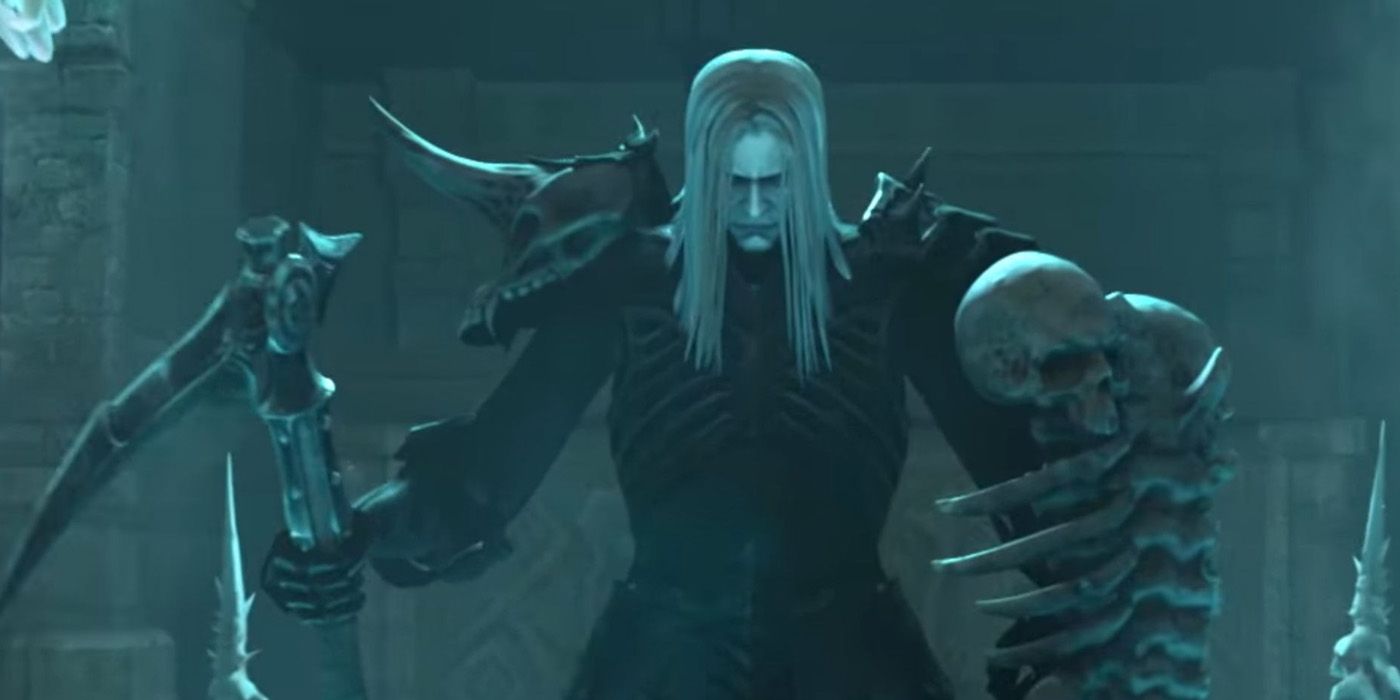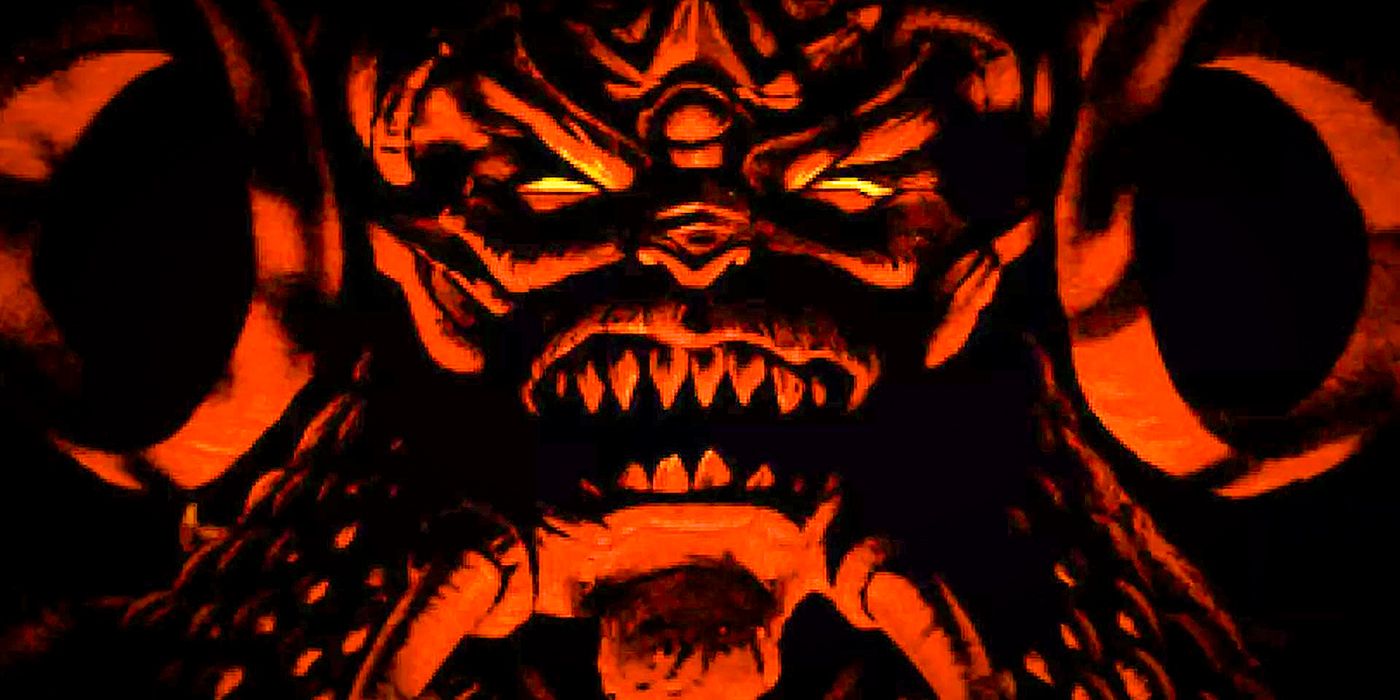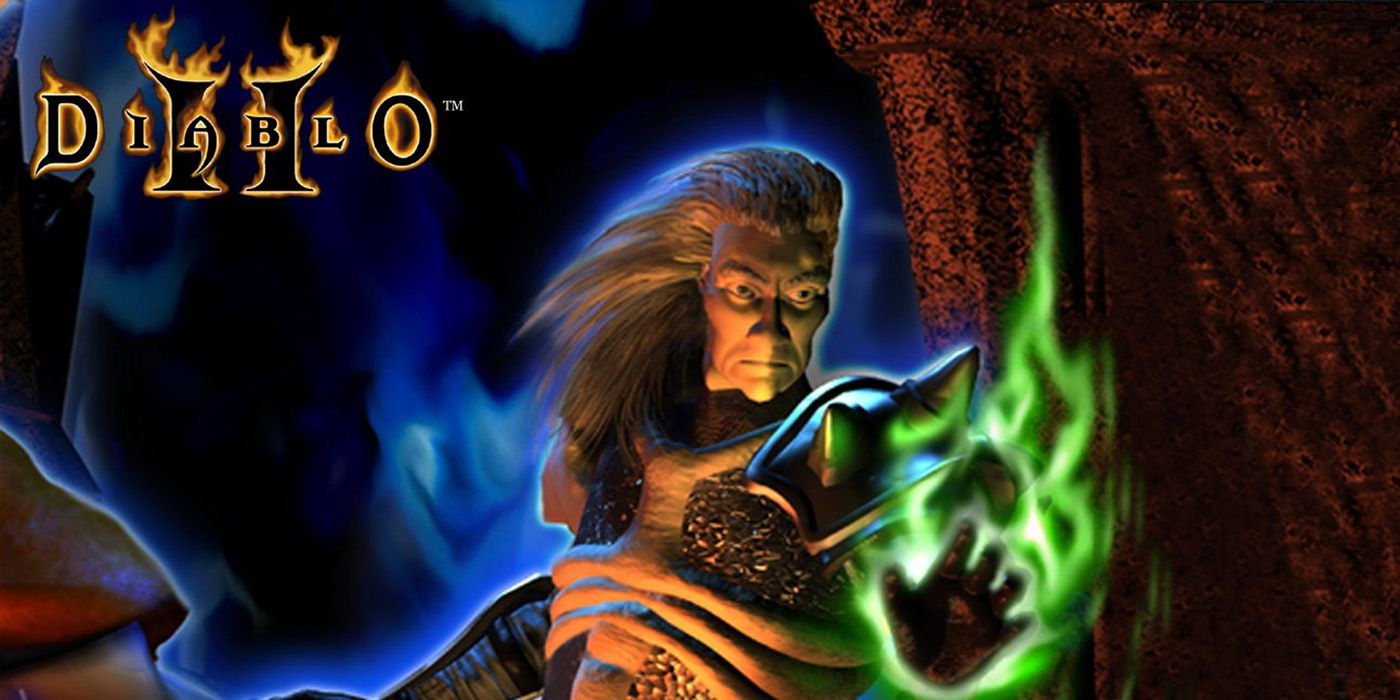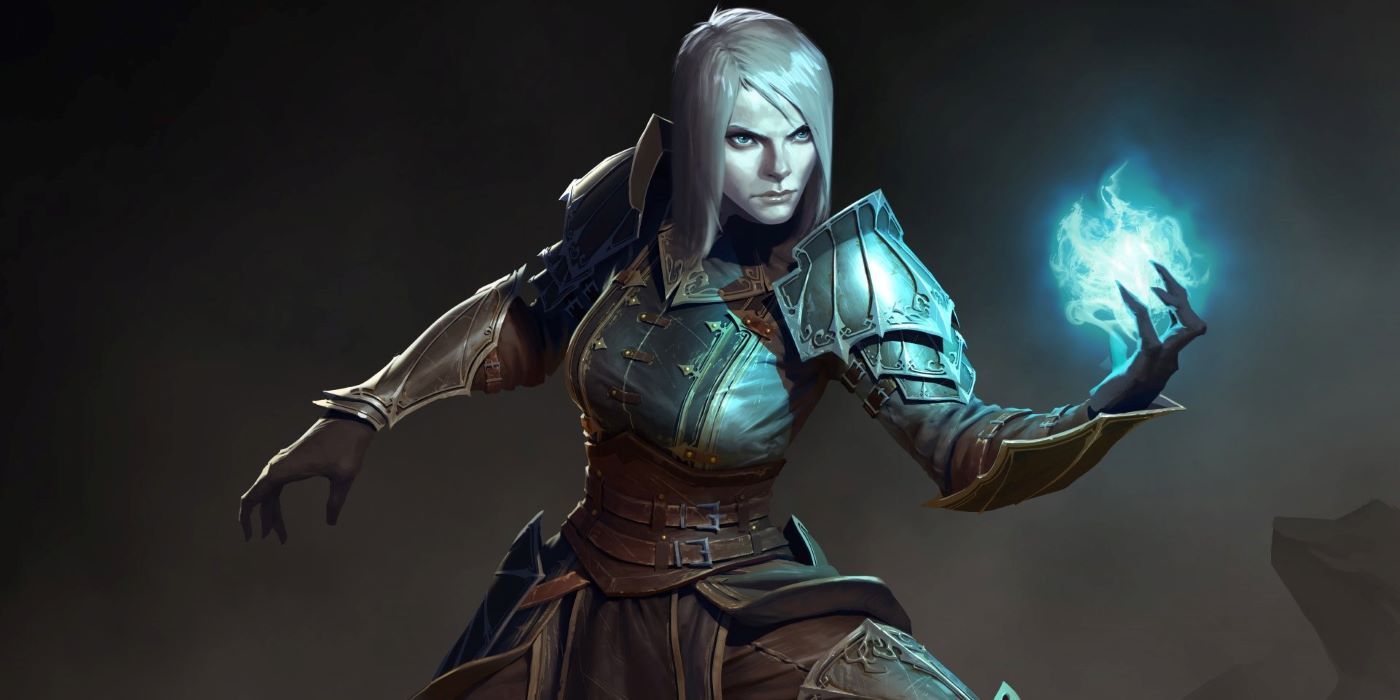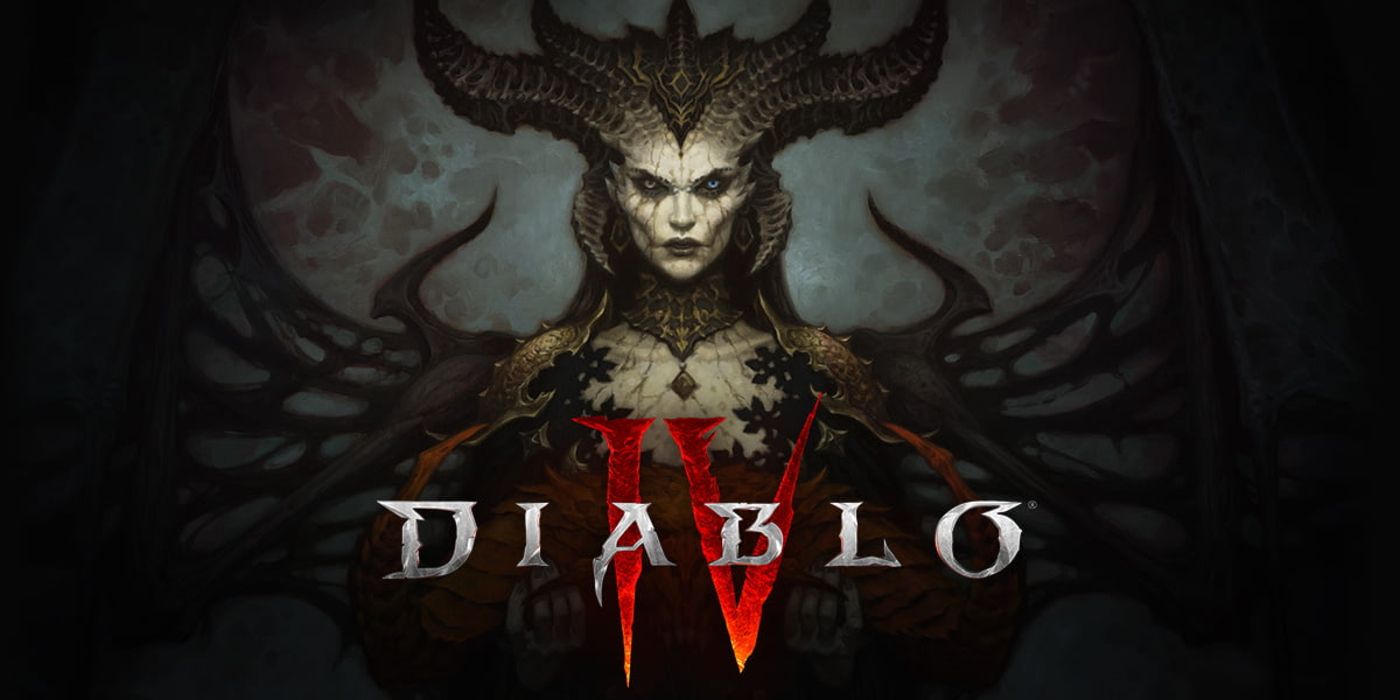The Priests of Rathma, known to outsiders as the Necromancers, may look terrifying and evil, but that couldn't be further from the truth. The Necromancers throughout the Diablo series are the most misunderstood class of all. From their brooding demeanor to their ghastly pale skin, they use Prime magic to maintain the Great Cycle of Being, also known as the balance. This balance is what keeps the mortal realm, also known as Sanctuary, from being swept up in the great Eternal Conflict between heaven (order) and hell (chaos).
The Necromancer first appeared in Diablo 2's base game as a playable class alongside the Amazon, Barbarian, Sorceress, and Paladin. The Necromancer was also a playable class later on in Diablo 3's expansion, Reaper of Souls, and in Diablo Immortal, the Necromancer is available as well. Though it is unlikely, the Necromancer could be playable in Diablo 4 as its fifth and final class reveal.
A Brief History of Necromancer
In the Diablo series, the Necromancers are Priests of Rathma. They reside in the far eastern jungles of Kehjistan, in a vast underground city called Necropolis. This isolation allows them to study their distinct arcane science of Necromancy, the only mortals to master such a technique. Practitioners of Necromancy use Prime Magic to manipulate life essence through all living things afflicting them with curses. This practice goes back to before magic was formalized into strict disciplines. Necromancers are pragmatic and above temptation, and they know death is part of life and do not seek to deny it. Their singular knowledge of the unknown allows them to face death without fear, and hold sacred the delicate nature between life and death.
The true purpose of the Priests of Rathma doctrine is to maintain the balance between Order and Chaos. Necromancers strive to use their powers to serve this balance and never upset it. Their desire to uphold this balance is what brings the Necromancers out from their remote home of Necropolis to face the likes of Diablo and other evils. Necromancers seek to rid the mortal realm of any non-mortal interventions. Despite maintaining a neutral standpoint, they will ally themselves with the Order until the balance is restored.
Necromancers in Diablo 2
In Diablo 2, players have the option to play the poison imbuing, undead commanding, bone throwing Necromancer. Players cannot choose to play as a female Necromancer, however, unlike in Diablo 3 Reaper of Souls. As a result, players who choose the Necromancer are playing a character named Xul. After the events of Diablo 2, Xul takes on an apprentice named Mehtan, who can be seen later as a Master Necromancer NPC in Diablo 3. Xul himself does not make an appearance in Diablo 3.
The Necromancer's abilities in Diablo 2 vary in playstyle. He can command legions of undead and elemental golems to overwhelm his foes from afar. Another option is to wield the power of poison, imbuing his dagger with the stuff, or exploding large poisonous novas outwards from the caster. If those two do not suit the players' fancy, they have the option to specialize in bone manipulation. He can summon a bone spirit to chase a foe down, siphoning bits of their soul, or he can trap his enemies in a bone prison. Alternatively, he can throw teeth. Along with all of these dynamic playstyles the Necromancer utilizes Prime magic, cursing his foes, amplifying whatever strategy players choose to employ. This skill-set makes him a strong case for playing the Necromancer when Diablo 2: Resurrected launches.
Necromancers in Diablo 3
When Team 3 was developing the Necromancer for Diablo 3, it looked at the Diablo 2 version and concluded that it had strong necromantic themes, but not a blood-related theme. It noted in Diablo 2 that he also focused on poison and damage-over-time, but because this was a specialty mainly used by the Witch Doctor, they kept poison to a minimum for the Necromancer, mainly available through skill runes. Instead, they would allow this version of Necromancer to focus more on bone and blood spells, alongside their necromancy and curses.
This version of the Necromancer uses a resource called Essence, which ties in with the Prime magic theme. They can also use their own health as a resource to use the more powerful blood magic skills such as Simulacrum, which creates a bloody human entity summon that mimics some skills the player casts. Much like the Necromancer in Diablo 2, this version can summon skeletons, skeleton mages and command various types of golems. Necromancers in Diablo 3 can also utilize freshly spawned corpses to cast Revive, spawning up to 10 minions to command, or Devour to consume corpses restoring Essence. This playstyle makes the Necromancer an S-tier build for Diablo 3 season 22.
Necromancer in Diablo Immortal and Diablo 4
The Necromancer has been confirmed to be a playable class in Diablo Immortal, the mobile middle game that takes place between Diablo 2 and Diablo 3. The Necromancer in Diablo Immortal is confirmed to using Command Skeletons (like in Diablo 2 and 3) and Corpse Lance (like in Diablo 3). New to their arsenal is a skill called Skeletal Spikes, which are bone spikes that shoot up from the ground impaling enemies. Diablo Immortal playtesters are hugely enthusiastic according to Blizzard, which is a good sign considering as the Necromancer is available to playtest.
Diablo 4 has not confirmed the Necromancer as a playable class, though that doesn't mean it'll be that way forever. If the Necromancer isn't included in the base game, it could very easily be added on down the line. According to the lore, the Necromancer is always around when the Great Cycle of Being is at risk. This means that if any threat to the mortal realm were to occur, the Necromancers will leave their cushy home in isolation to help resolve this problem, and once again bring balance to Order and Chaos.
Lilith is confirmed as the main antagonist of Diablo 4. In the lore, she and a rogue angel named Inarius had a child named Linarian, who later changed his name to Rathma. He helped establish the Priests of Rathma, the initiative that the Necromancers follow. With Lilith playing a major role in Diablo 4, would it be appropriate to leave the Necromancer out as a playable class? There are pros and cons of including the Necromancer, but only time will tell.
Diablo 4 is being developed for PC, PlayStation 4, and Xbox One.

